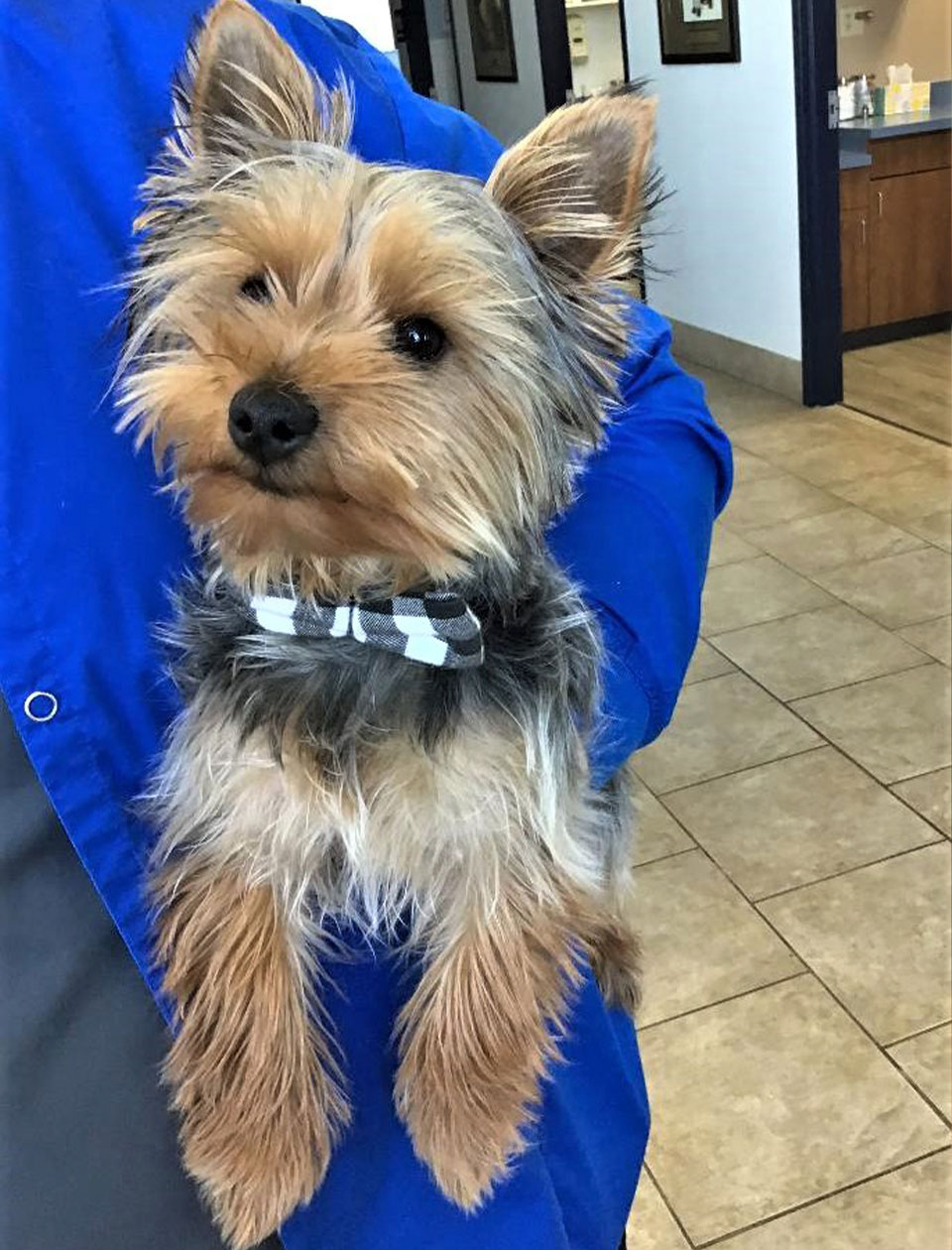
Dentistry and Oral Hygiene
People and pets can have similar dental problems, including cavities, tooth fractures, tooth infections, and tooth mal-alignments. We brush our teeth daily decreasing the build up of tarter, plaque, and oral disease. Most pets’ teeth are not brushed daily causing tarter and plaque buildup. Plaque can lead to periodontitis which is damaging to the supporting structures of the teeth and jaw bone. We also floss regularly so we do not normally have gingivitis (inflammation and redness of the gums). Gingivitis and periodontitis cause mouth pain when left untreated. Most of us visit the dentist at least once a year to help with our oral care. Cats and dogs should also have regular dental cleanings. There have been many studies that prove good oral care can lead to better liver, kidney, and heart function.

Here at Wildwood Animal Hospital, we provide several services to provide safe and healthy oral care
- Oral evaluation during physicals exams
- Presurgical bloodwork evaluating blood cell count, liver and kidney organ function
- Presurgical urine analysis evaluating organ function
- Presurgical electrocardiogram (ECG) evaluation heart function and monitoring heart murmurs
- General anesthesia and a dedicated technician monitoring the anesthesia
- Complete cleaning, scaling, and polishing of the teeth by a trained technician
- Fluoride treatment
- A complete and charted oral exam while the patient is sedated
- Dental radiographs
- Surgical extractions if necessary in diseased teeth
- Post dental care and follow up instructions
- Numerous at home dental care products and treats
- Please feel free to contact us for more information or with any questions regarding our dental services
How to Brush your Pet’s Teeth

Congratulations! You have decided to provide a level of oral hygiene for your pet that will greatly improve your pet’s health. Proper care at home is the MOST important factor in protecting your pet from periodontal disease.
A few tips for brushing your pet’s teeth:
- Do feed a diet including dry, crunchy foods to help stimulate the gums and eliminate some of the plaque buildup.
- Do not rush the brushing process. Your pet may resist if rushed.
- Do reward your pet with a small treat and lots of praise at the end of each brushing.
- Do not use human toothpaste as it may cause vomiting.
- Do brush at least weekly and if possible, daily.
Week 1
Using you hand, slowly and gently open your pet’s mouth. Run your fingers around his lips, along his gums, and include lifting his lips. This should last about 30 seconds on day 1 and progress to several minutes by the end of the week. Select a time of day that you can do on a consistent basis and a time when both you and your pet are relaxed.
Week 2
This week use either a wet washcloth or a wet finger toothbrush to lift the lips and massage the outer surfaces of the upper and lower teeth. It is best to start with the front teeth and slowly work towards the back teeth. A back and forth motion is the easiest but a circular motion is more effective. Do this for 30 seconds on day one progressing to three minutes by the end of the week.
Week 3
This week use a soft bristled pet toothbrush and add a small amount of pet toothpaste. Brush the teeth concentrating mainly on the cheek side of the teeth and gums. You do not have to brush the inside of your pet’s teeth closest to their tongue. Pets require very little care on the inside surfaces of the teeth as the tongue helps clean those. If you pet is resistant to pet toothpaste, you can try using some of the suggestions below to get your pet used to the toothbrush and then slowly substitute the pet toothpaste back in.
- canned food
- peanut butter
- baby food
- tuna water
- chicken broth
Brushing your pet’s teeth is an important part of their health and care. It is never too late to start! Please ask us if you need any help! We also have a variety of dental products to go along with brushing to help keep your pet’s teeth healthy.
